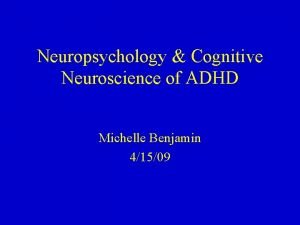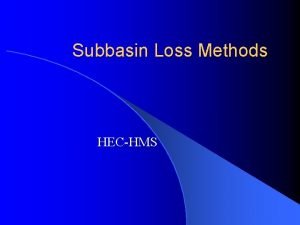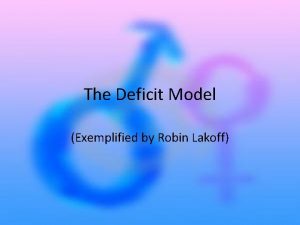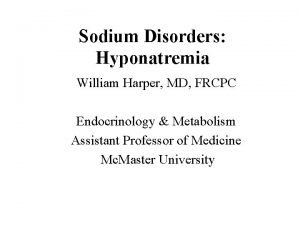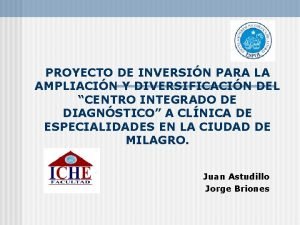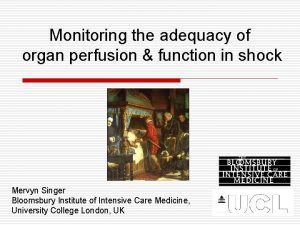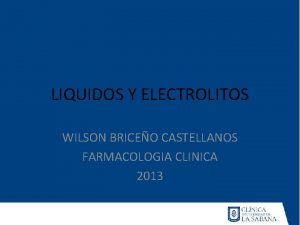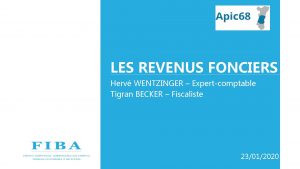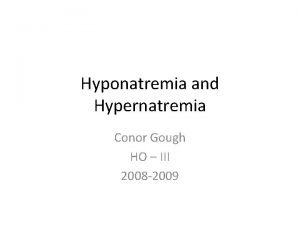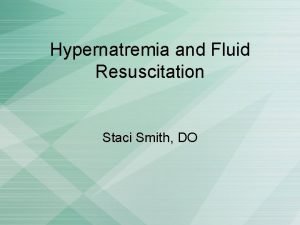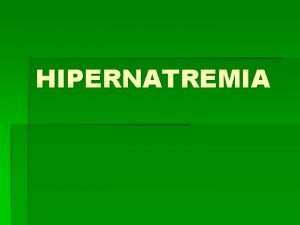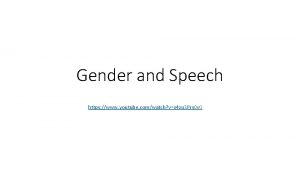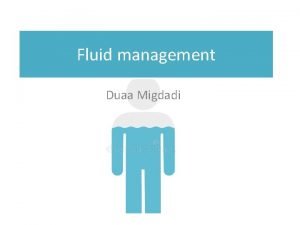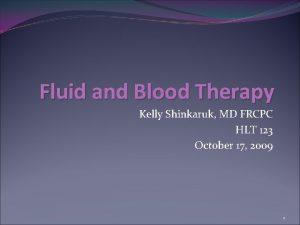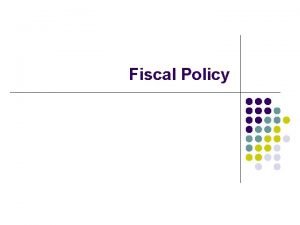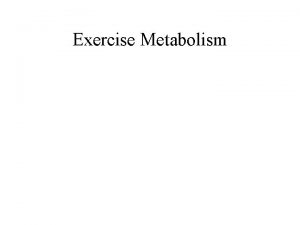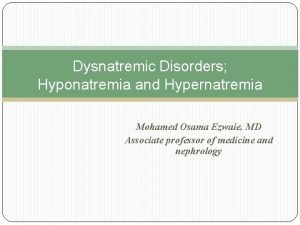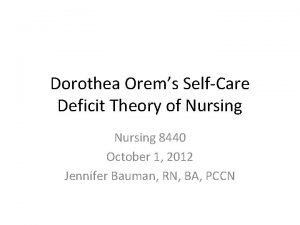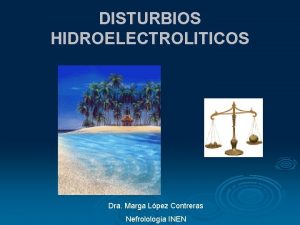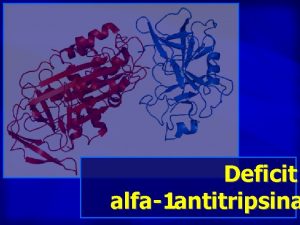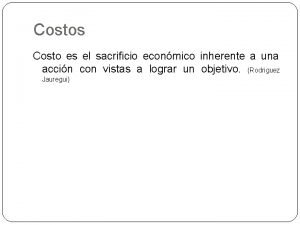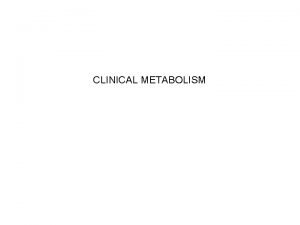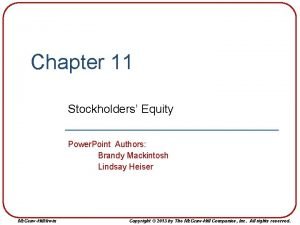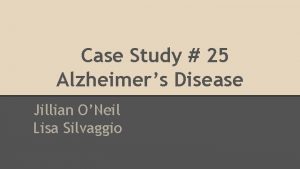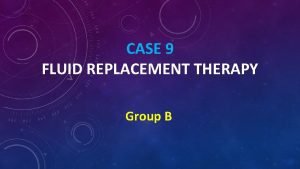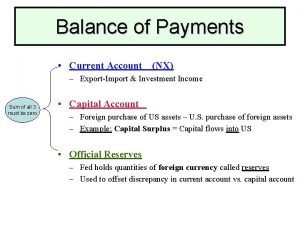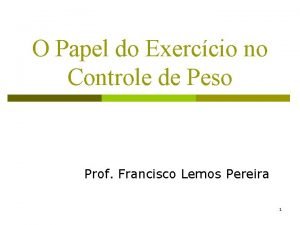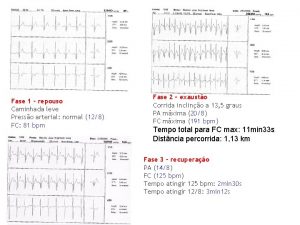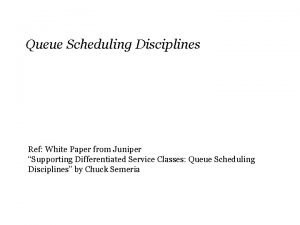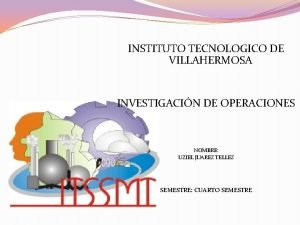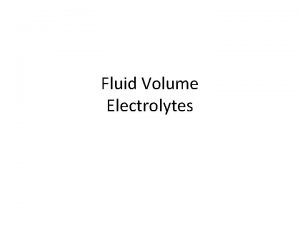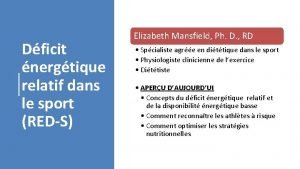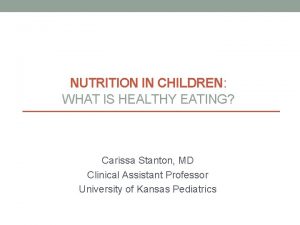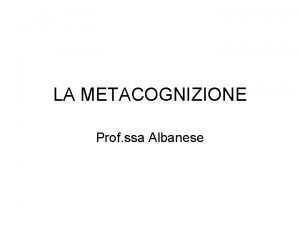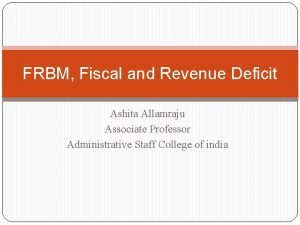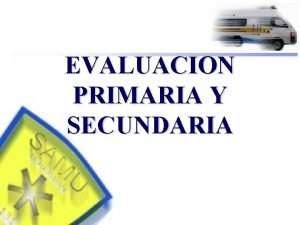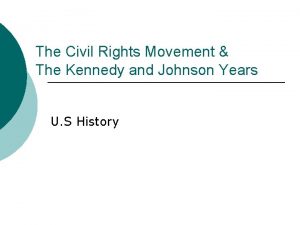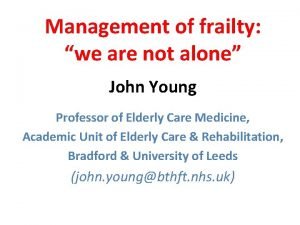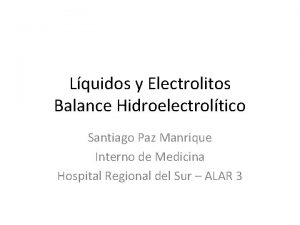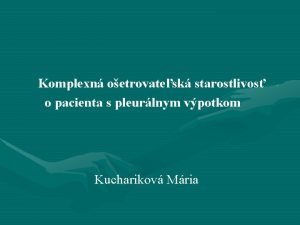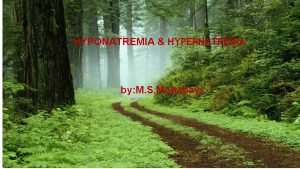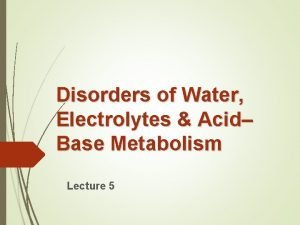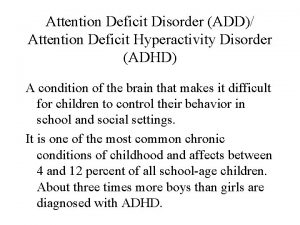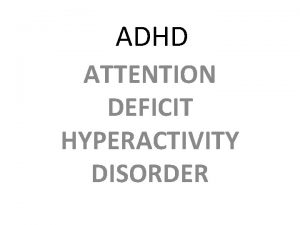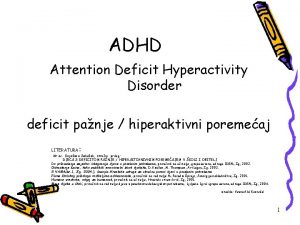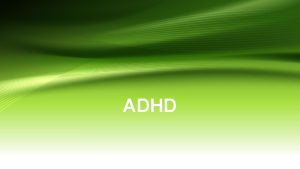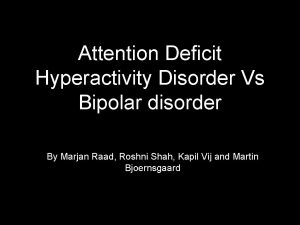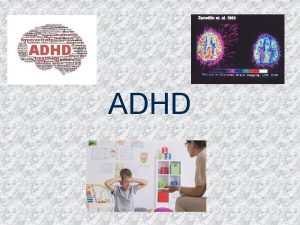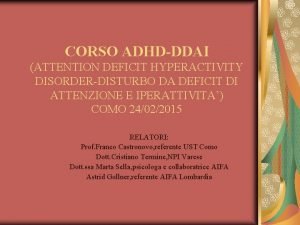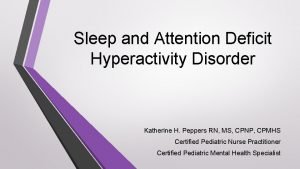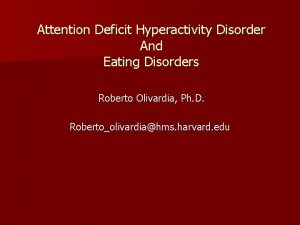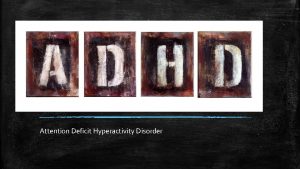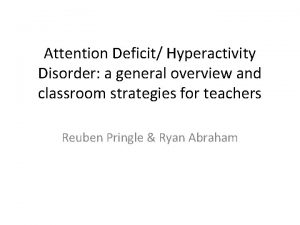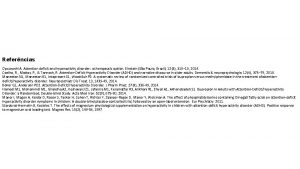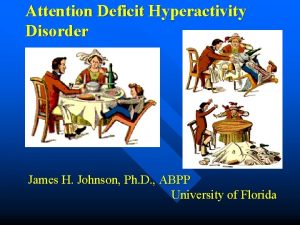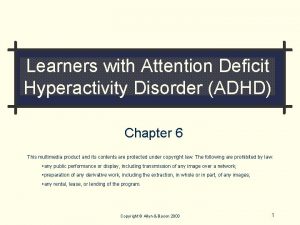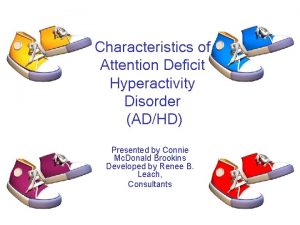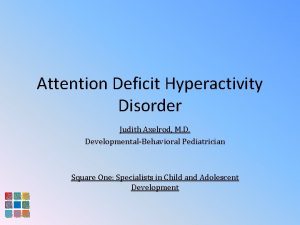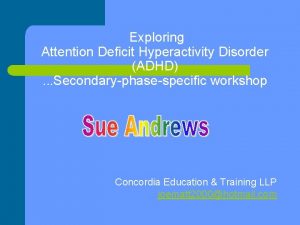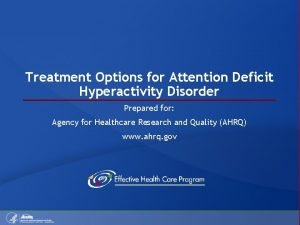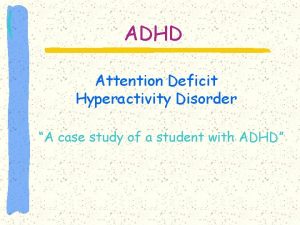Attention Deficit Hyperactivity Disorder and the T O
























































![Norms Variability (SD, ms): Total Test – Females [Mean + SD] Standard Deviation of Norms Variability (SD, ms): Total Test – Females [Mean + SD] Standard Deviation of](https://slidetodoc.com/presentation_image_h/7ecbe64856e3bf15726161817b48f0f2/image-57.jpg)






































- Slides: 95

Attention Deficit Hyperactivity Disorder and the T. O. V. A.

Overview of this Workshop � Attention Disorders, including ADHD � Continuous Performance Tests (CPTs) and the T. O. V. A.

Goals for this Workshop • Promote Empirically-Based Assessment of attention and impulsivity • Improve the lives of children and adults ‘at risk’ for the diagnosis of ADHD • Improve care for children and adults with attention problems

Objectives of this Workshop The participant will learn about the �DSM IV criteria for ADHD and limitations. �Diagnostic procedures for attention problems. �Treatment modalities for attention problems. �Use and interpretation of the T. O. V. A. in the diagnosis and treatment of attention problems.

Response Histogram Illustration 1

Response Histogram Illustration 2

Response Histogram Illustration III

Attention I � Attention is best described as the sustained focus of cognitive resources while filtering or ignoring extraneous information. Attention is a very basic function that often is a precursor to many other neurological/cognitive functions. (Wikipedia) � Focused attention: This is the ability to respond discretely to specific visual, auditory or tactile stimuli. � Sustained attention: This refers to the ability to maintain a consistent behavioral response during continuous and repetitive activity.

Attention II � Selective attention refers to the capacity to maintain a behavioral or cognitive set in the face of distracting or competing stimuli. It incorporates the notion of “freedom from distractibility”. � Alternating attention refers to the capacity for mental flexibility allowing individuals to shift their focus of attention and move between tasks having different cognitive requirements. � Divided attention is the highest level of attention and it refers to the ability to respond simultaneously to multiple tasks or multiple task demands.

Attention Span �Average attention span for adults is 20 minutes. �Hyper-focusing is the ability to narrow one’s world down to a task or experience. People often experience losing track of time during these periods.

Terminology 1. Inattention, distractibility, impulsivity and hyperactivity - descriptive terms 2. Symptom-complex- a cluster of symptoms 3. Attention Deficit Disorders (ADDs)- not diagnostic 4. Attention Deficit Hyperactivity Disorder (ADHD) - a specific DSM IV diagnosis a biologically-based psychological process 5. Target symptom- the focus of treatment

DSM IV Types of ADHD � Predominantly Inattentive Type (314. 00) � Predominantly Hyperactive-Impulsive Type (314. 01) � Combined Type (314. 01) � ADHD Not Otherwise Specified (314. 9)

The Diagnostic Criteria for ADHD I The Predominantly Inattentive Type (314. 00) must have six or more of the following symptoms: I. 1. 2. 3. 4. 5. 6. 7. 8. 9. Often fails to give close attention to details or makes careless mistakes in schoolwork, etc. ; Often has difficulty sustaining attention; Often does not seem to listen to what is being said; Often does not follow through on instructions and fails to finish schoolwork, chores, or work (but not due to oppositional behavior or failure to understand instructions); Often has difficulty organizing tasks and activities; Often avoids or strongly dislikes tasks requiring sustained mental effort; Often loses things necessary for tasks or activities; Often easily distracted by extraneous stimuli; and Often forgetful in daily activities

The Diagnostic Criteria for ADHD II The Predominantly Hyperactive-Impulsive Type (314. 01) must have six or more of the following symptoms: II. 1. 2. 3. 4. 5. 6. 7. 8. 9. Often fidgets with hands or feet or squirms in seat; Often leaves seat in classroom; Often runs about or climbs excessively (For adolescents or adults, may be limited to feelings of restlessness); Often has difficulty playing quietly; Often blurts out answers to questions too soon; Often has difficulty waiting in line or waiting for turn. Often blurts out answers before questions have been finished. Often has trouble waiting one’s turn. Often interrupts or intrudes on others (butts into conversations or games).

ADHD- Combined and NOS III. The Combined Type (314. 01) has both inattentive and hyperactive/impulsive symptoms. IV. ADHD Not Otherwise Specified (314. 9) • Adults and adolescents with ADHD who do not meet criteria for 314. 01, but are affected by symptoms of ADHD

Diagnostic Requirements for ADHD I. II. There must be the necessary number of symptoms from the lists above, and Each of the following criteria must be met: The onset of symptoms is no later than seven years of age 1. 2. 3. The symptoms must be present in two or more situations (like home and school); There must be clinically significant distress or impairment in social, academic, or occupational functioning; The condition can not be caused by another psychiatric illness like Pervasive Developmental Disorder, Schizophrenia, or other psychotic disorder of mood, anxiety, dissociation, or personality.

Limitations of DSM-IV category of ADHD I 1. ADHD is a symptom-complex not a disorder - Multiple etiologies, treatments and prognoses 2. Diagnostic criteria are behavioral and subjective 3. Impairment is subjectively determined

Limitations of DSM-IV category of ADHD II 4. Symptoms are situation specific, age-linked, and culture bound 5. Symptoms often become manifested after age 7 6. ADHD is confusing

Limitations of DSM IV Category of ADHD III 7. Ability to “hyperfocus” is not addressed 8. Traumatic Brain Injury (TBI) not explicitly excluded 9. Absence of “executive functions” in symptom-complex 10. Must consider the manner in which symptoms may manifest in girls versus boys

Executive Functions I Necessary for effective planning and problem solving 1. Identify and prioritize problems 2. Select, retrieve and /or gather, and organize pertinent data 3. Select an appropriate problem solving strategy 4. Organize, analyze, and interpret relevant data 5. Evaluate results and process 6. Working memory

Executive Functions II 7. Focusing and filtering (in and out--selective attention) 8. Affect regulation 9. Behavior regulation (e. g. , impulse control) 10. Regulate arousal level 11. Regulation information processing 12. Maintain motivation

What do these all have in common? Depression Anxiety Tourettes syndrome Toxins (e. g. : lead poisoning) Auditory processing problems Language disorder Post-Traumatic Stress Disorder Head injury Intellectual precocity/impairment Sensory anomalies Medications Oppositional defiant disorder Learning disability Poor social history Poor hearing Sleep problems Physical or sexual abuse Executive dysfunction Neurological disorders Family style Poor school “fit” Dementias Hearing loss Visual impairment Etc.

�They are all mistaken for ADHD

Causes of the ADHD Symptom Complex I � Normal (including “Active Alert”) � General Medical problems � Neurological problems (other than ADHD) Sensory deficits and hypersensitivities Traumatic Brain Injuries (TBI) Intellectual impairment (and precocity) Learning disabilities Dementias Sleep disorders Seizures � Medications

Causes of ADHD Symptom Complex II �Family style and organization �School readiness, learning style, and motivation �Stress

Causes of ADHD Symptom Complex III �Psychiatric conditions Substance use, abuse and withdrawal Anxiety Depression Bi-Polar Behavioral disorders: Conduct Disorder, ODD Malingering Pervasive Developmental Disorders �ADHD � 4 -5% of adults � 9. 5% of children

Response Time Histogram Comparison

Diagnosing ADHD I 1. History 2. Behavior ratings - ACTe. RS, SBCL, BASC-2, BAADS, CTRS-R, Vanderbilt 3. Symptom behavior check list 4. Mental Status Exam 5. Continuous performance tests (CPTs)

Diagnosing ADHD II 6. Physical and neurological exams 7. Psychological, psychiatric, and neuropsychological evaluations 8. Evaluation of classroom/work place

Comorbidity is the rule, not the exception � 58% - 87% of children diagnosed with ADHD have at least one comorbid disorder � Up to 20% may have three or more comorbid disorders � Most common comorbid conditions: � Oppositional Defiant Disorder (54% to 84%) � Learning Disability or Language Disorder (25% to 35%) � Anxiety disorder (up to 30%) – up to 50% have some symptoms � Mood disorder (up to 33%) � Substance Abuse (ADHD 5 -10 x more common in adult alcoholics than non-alcoholics)

Co-morbidity by Type I Predominantly Inattentive Type: 21% had Oppositional Defiant Disorder 21% had Minor Depression Dysthymia Disorder 19% had Generalized Anxiety Disorder

Co-morbidity by Type II Predominantly Hyperactive-Impulsive Type: 42% had Oppositional Defiant Disorder 22% had Generalized Anxiety Disorder 19% had Minor Depression Dysthymia Disorder

Co-morbidity by Type III Combined Type: 50. 7% had Oppositional Defiance Disorder 22. 7% had Minor Depression Dysthymia Disorder 12. 4% had Generalized Anxiety Disorder

ADHD vs. Pediatric Bipolar Disorder? • PBD is certainly over diagnosed • 50% diagnosed were PBD reclassified as depression or conduct disorder when given research-based assessment • Many symptoms are misinterpreted: – – – Social “activation” in ADHD “Explosive” behavior in ODD “Mood swings” loose term, can have multiple causes “Episodes” can be secondary to stressors Sexual precocity can arise from sexual abuse or exposure to pornography

Treatment of ADHD I �Establish diagnosis and provide information �Psychotherapy: Parental/Spousal counseling, school/workplace, vocational, recreational �Coaching

Treating ADHD II �Neurofeedback �Behavior modification �Dietary considerations �Meditation �Medication

Measuring Symptoms and Treatment Subjective measures �Reports and history �Behavior ratings �Symptom checklists �Global clinical judgment Objective measures �Psychological and educational tests �CPTs

Medication Dosage Effects on Attention and Behaviour (Schematic)

Continuous Performance Tests (CPTs) CPTs measure how well a person pays attention by continuously monitoring how quickly and successfully a task is performed over time.

T. O. V. A. ® Tests of Variables of Attention �The Visual T. O. V. A. measures attention, impulsivity, reaction time and consistency when processing visual information �The Auditory T. O. V. A. . measures attention, impulsivity, reaction time and consistency when processing auditory information



Visual Stimuli: Focus Point .

Visual Stimuli: Nontarget

Visual Stimuli: Target

Visual Practice Test

Auditory Stimuli �Target: G above Middle C (392. 0 Hz) �Nontarget: Middle C (261. 6 Hz)

Auditory Practice Test

T. O. V. A. Test Construction � Fixed 2 second intervals between stimuli � Stimulus “on” for 1/10 second (100 ms) � There are two subtests � In half 1 (the "Infrequent" or vigilance test) the target-to-nontarget ratio is 1: 3. 5 � In half 2 (the "Frequent" or high response test) the target-to-nontarget ratio is 3. 5: 1 � Length of test � 10. 8 minutes for each subtest, 21. 6 minutes total for 6 and older � Thus 21. 6 minutes for entire test � “Sufficiently long” for measuring attention � 5. 4 minutes each subtest, 10. 8 minutes total for ages 4 -5,

T. O. V. A. Test Features I �Research-quality time measurement ( 1 ms) �Real time measurement

Timing Accuracy of CPTs Preset Exact Response Time (ms) Mean Measured Response Time (ms) Standard Deviation Measured Response (ms) T. O. V. A. ™ Microswitch 300 600 300 599 ± 1 Conners' with Mouse 300 600 900 353 655 943 +28 +14 +21 Conners' with Keyboard 300 600 900 355 656 948 +28 +11 +25 Software/ Input Device

T. O. V. A. Test Features II �Monochromatic �Nonsequential �Non-alphanumeric �Culture free

T. O. V. A. Test Features III �Fixed intervals �Visual or auditory �Limited practice effects (high test-retest reliability) �Extensive age and gender based norms from 480+ �Symptom Exaggeration Index

T. O. V. A. Variables I � Response Time Variability �processing time inconsistency � Correct Response Time �processing time � d' or Response Sensitivity �decrement of performance in differentiating signals (targets) from noise (nontargets)

T. O. V. A. Variables II � Errors of Commission �responding incorrectly to a nontarget; a measure of impulsivity and/or disinhibition � Errors of Omission �not responding to a target; a measure of inattention

T. O. V. A. Variables III � Anticipatory Responses � responding <150 ms after stimulus; a measure of guessing � Post-Commission Response Time � Response Time following a Commission Error; self control measure � Multiple Responses � more than one response per stimulus; a reflection of neurological status and/or test taking behavior � Commission Error Response Time � Response time when making a commission error
![Norms Variability SD ms Total Test Females Mean SD Standard Deviation of Norms Variability (SD, ms): Total Test – Females [Mean + SD] Standard Deviation of](https://slidetodoc.com/presentation_image_h/7ecbe64856e3bf15726161817b48f0f2/image-57.jpg)
Norms Variability (SD, ms): Total Test – Females [Mean + SD] Standard Deviation of Response Time (ms) Age

The T. O. V. A. does not diagnose ADHD

The T. O. V. A. measures attention, impulsivity, reaction time and consistency.

Uses of the T. O. V. A. I �Screen children and adults for attention problems �Establish baseline for tracking attention problems over time

Uses of the T. O. V. A. IV �Monitor treatment

Monitoring Treatment Over Time (Illustration 1)

Monitoring Treatment Over Time (Illustration 2)

Uses of the TOVA V • Measure effectiveness of medication throughout the day

Test Information �Required Information �Group ID, Subject ID and Session # (automatically generated) �Date and Time of Test (automatically entered) �Date of Birth �Gender �Medication and dosage information �Custom Subject Fields �Optional Information �Subject name �Test administrator’s name �Comments

Guidelines for T. O. V. A. Administration �Administered first and only in the mornings

Guidelines for T. O. V. A. Administration II Testing room should be quiet with no distracting noises and with dim lights An observer must be present at all times When testing for first time, the entire practice test should be given Do not prompt unless absolutely necessary

Guidelines for T. O. V. A. Administration III Use the T. O. V. A. Rating Form


Guidelines for T. O. V. A. Administration IV Record use of caffeinated beverages and nicotine Record sleep in the night before testing

Guidelines for T. O. V. A. Administration V Allow 1. 5 hours of rest between T. O. V. A. tests.

GUIDELINES FOR T. O. V. A. ADMINISTRATION 6 Compare Visual and Auditory T. O. V. A. ’s for a more comprehensive assessment.

T. O. V. A. Interpretation � Clinical reports use clinical wording: � The results are within normal limits. � Overall, this T. O. V. A. is suggestive of an attention problem. � Screening reports avoid any diagnostic statement that could become a liability problem for non-clinicians, non-mental health professionals, and schools using the T. O. V. A. : � The results are within normal limits. � The results are not within normal limits and warrant a referral to a clinician for a clinical assessment.

T. O. V. A. Interpretation � THE T. O. V. A. DOES NOT DIAGNOSE ADHD: � “Suggestive of an attention problem” does not necessarily mean that the person has ADHD. � It simply means that the results were not within normal limits for age, gender, and assuming average intelligence. � The T. O. V. A. Interpretation and the Attention Performance Index (API) are two separate interpretations of the data � These test results are not within normal limits, and the API (-2. 18) is also not within normal limits. � An API "within normal limits" is considered "inconclusive”. The subject may have an attention problem (including ADHD) but does not have the typical ADHD pattern.

This page is included in a Standard T. O. V. A. Report and in the Detailed T. O. V. A. Report

This page is included in a Standard T. O. V. A. Report and in the Detailed T. O. V. A. Report

This page is included in a Standard T. O. V. A. Report and in the Detailed T. O. V. A. Report

This page is included in a Standard T. O. V. A. Report and in the Detailed T. O. V. A. Report


This page is included in a Standard T. O. V. A. Report and in the Detailed T. O. V. A. Report

This page is included in the Detailed T. O. V. A. Report

This page is included in the Detailed T. O. V. A. Report

This page is included in a Standard T. O. V. A. Report and in the Detailed T. O. V. A. Report












 Conversion vs somatic symptom disorder
Conversion vs somatic symptom disorder Michelle benjamin phd
Michelle benjamin phd Deficit and constant loss method
Deficit and constant loss method Robin lakoff deficit theory
Robin lakoff deficit theory Sodium deficit
Sodium deficit Foda hospitalario
Foda hospitalario Dr mehdi hasan
Dr mehdi hasan Base deficit
Base deficit Hiponatremia hipoosmolar
Hiponatremia hipoosmolar Déficit imputable sur les revenus fonciers 4bb
Déficit imputable sur les revenus fonciers 4bb Sodium deficit
Sodium deficit Sodium deficit
Sodium deficit Bicarbonate deficit replacement
Bicarbonate deficit replacement Metodo de deficit acumulado
Metodo de deficit acumulado Causas de hipernatremia
Causas de hipernatremia Otto jespersen deficit theory
Otto jespersen deficit theory Fuerzas localizacionales
Fuerzas localizacionales Fluid deficit calculation
Fluid deficit calculation Maintenance fluid formula 4-2-1
Maintenance fluid formula 4-2-1 Fiscal
Fiscal Oxygen deficit trained vs untrained
Oxygen deficit trained vs untrained Araza
Araza Inversion fija y diferida
Inversion fija y diferida Deficit balanza de pagos
Deficit balanza de pagos Sodium deficit
Sodium deficit Dka criteria
Dka criteria Deficit theory
Deficit theory Agua corporal total
Agua corporal total Fenotipizacija alfa 1 antitripsina
Fenotipizacija alfa 1 antitripsina Deficit in balance of payment
Deficit in balance of payment Costo inherente
Costo inherente Adrogue madias formula
Adrogue madias formula Deficit spending exists when
Deficit spending exists when Par stock
Par stock Pes statement for diabetes
Pes statement for diabetes Maintenance fluid formula 4-2-1
Maintenance fluid formula 4-2-1 Current account deficit vs surplus
Current account deficit vs surplus Water deficit 계산
Water deficit 계산 Predominante
Predominante Fiskalni deficit znacenje
Fiskalni deficit znacenje Déficit cronotrópico tabela
Déficit cronotrópico tabela Deficit de biotina
Deficit de biotina Ubi ordo deficit nulla virtus sufficit
Ubi ordo deficit nulla virtus sufficit Deficit weighted round robin
Deficit weighted round robin Deficit trehalázy
Deficit trehalázy Lotes económicos con déficit
Lotes económicos con déficit Ecf volume deficit
Ecf volume deficit Déficit énergétique relatif dans le sport
Déficit énergétique relatif dans le sport Health deficit meaning
Health deficit meaning Carissa stanton md
Carissa stanton md Self care requisite
Self care requisite Modello del controllo esecutivo di brown
Modello del controllo esecutivo di brown Ashita allamraju
Ashita allamraju Pirrl pupilas
Pirrl pupilas Ahorro publico
Ahorro publico Deficit de balanza de pagos
Deficit de balanza de pagos @soup_nn
@soup_nn Why did the struggle for equal rights intensify
Why did the struggle for equal rights intensify Que es la politica fiscal
Que es la politica fiscal Sodium deficit correction formula
Sodium deficit correction formula Deficit sacharázy
Deficit sacharázy Retos de potasio
Retos de potasio Exceso de base
Exceso de base Deficit sebaopatery
Deficit sebaopatery Hyponatremia correction formula
Hyponatremia correction formula Anion gap formula
Anion gap formula Budžetski deficit
Budžetski deficit Budžetski deficit
Budžetski deficit Strukturální deficit
Strukturální deficit Fiskální politika definice
Fiskální politika definice Hát kết hợp bộ gõ cơ thể
Hát kết hợp bộ gõ cơ thể Bổ thể
Bổ thể Tỉ lệ cơ thể trẻ em
Tỉ lệ cơ thể trẻ em Chó sói
Chó sói Thang điểm glasgow
Thang điểm glasgow Chúa sống lại
Chúa sống lại Các môn thể thao bắt đầu bằng tiếng bóng
Các môn thể thao bắt đầu bằng tiếng bóng Thế nào là hệ số cao nhất
Thế nào là hệ số cao nhất Các châu lục và đại dương trên thế giới
Các châu lục và đại dương trên thế giới Công của trọng lực
Công của trọng lực Trời xanh đây là của chúng ta thể thơ
Trời xanh đây là của chúng ta thể thơ Cách giải mật thư tọa độ
Cách giải mật thư tọa độ Phép trừ bù
Phép trừ bù Phản ứng thế ankan
Phản ứng thế ankan Các châu lục và đại dương trên thế giới
Các châu lục và đại dương trên thế giới Thơ thất ngôn tứ tuyệt đường luật
Thơ thất ngôn tứ tuyệt đường luật Quá trình desamine hóa có thể tạo ra
Quá trình desamine hóa có thể tạo ra Một số thể thơ truyền thống
Một số thể thơ truyền thống Cái miệng nó xinh thế chỉ nói điều hay thôi
Cái miệng nó xinh thế chỉ nói điều hay thôi Vẽ hình chiếu vuông góc của vật thể sau
Vẽ hình chiếu vuông góc của vật thể sau Thế nào là sự mỏi cơ
Thế nào là sự mỏi cơ đặc điểm cơ thể của người tối cổ
đặc điểm cơ thể của người tối cổ Ví dụ về giọng cùng tên
Ví dụ về giọng cùng tên Vẽ hình chiếu đứng bằng cạnh của vật thể
Vẽ hình chiếu đứng bằng cạnh của vật thể Vẽ hình chiếu vuông góc của vật thể sau
Vẽ hình chiếu vuông góc của vật thể sau

